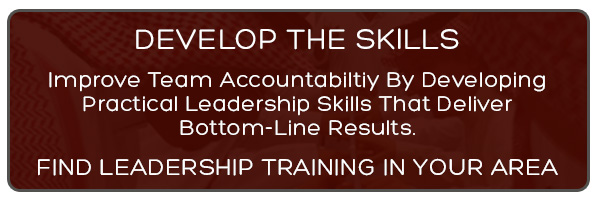A Leader’s Seven Step Framework for Problem Solving
“At the end of the day, what makes a leader and a manager successful is the capacity to solve problems. Problem solving is that magical glue that comes into a leadership world and makes us transformational leaders.” – Dr. Nido Qubein
 As we can see from the quote above, problem solving is foundational to leadership. Yet, no leadership manual exists that guides us neatly through the steps of problem solving. Even moreso, as problems become more and more complex, problem solving tends to be relegated to our intuitive powers rather than through a logical thinking process. No more. Below is a solid seven-step framework that will guide leaders nicely along as they solve tough business problems.
As we can see from the quote above, problem solving is foundational to leadership. Yet, no leadership manual exists that guides us neatly through the steps of problem solving. Even moreso, as problems become more and more complex, problem solving tends to be relegated to our intuitive powers rather than through a logical thinking process. No more. Below is a solid seven-step framework that will guide leaders nicely along as they solve tough business problems.
- Identify the problem: Benchmark the problem against the ideal. Therefore, first define how things should function in an ideal setting. During this process, be sure and clarify how much deviation from the ideal is permissible. With this gold standard in place, gauge how far the problem lies from the ideal.
- Analyze the problem: Prioritize whether the problem has just popped up, and thus requires no immediate resolution; whether it’s been in existence for some time and must be dealt with in the near future; or, whether the problem is in a crisis stage that must be dealt with immediately.
- Describe the problem: Describe the problem in a clear, concise fashion – usually 12 words or less. Be sure others agree with the description of the problem. After all, it’s important to ensure that the problem being solved is the problem you actually have.
- Look for root causes: Dig deep to get at the root of the issue. Ask questions like what caused this problem? Who is responsible for this problem? When did this problem first emerge? Why did this happen? Where does it hurt us most? How do we resolve this problem?
- Develop alternate solutions: Almost any problem has more than one solution. As you search for additional solutions, look to other organizations who have experienced the same issue. Consider your own similar past experiences, etc. Rank these potential solutions in order quality.
- Implement a decision: Implement the best decision by looking to the ranked alternatives as well as evaluating the risk. A straightforward risk evaluation involves asking yourself these three questions for each potential solution: (1) What is the best thing that can happen, (2) What is the worst that can happen, and (3) What is the most likely outcome? Choose the decision whose worst-case-scenario is manageable.
- Measure the results: Be prepared to pivot to an alternative solution if the original solution does not succeed.
So remember the next time a problem arises, that a solid framework exists that can help steer you into an excellent resolution.






